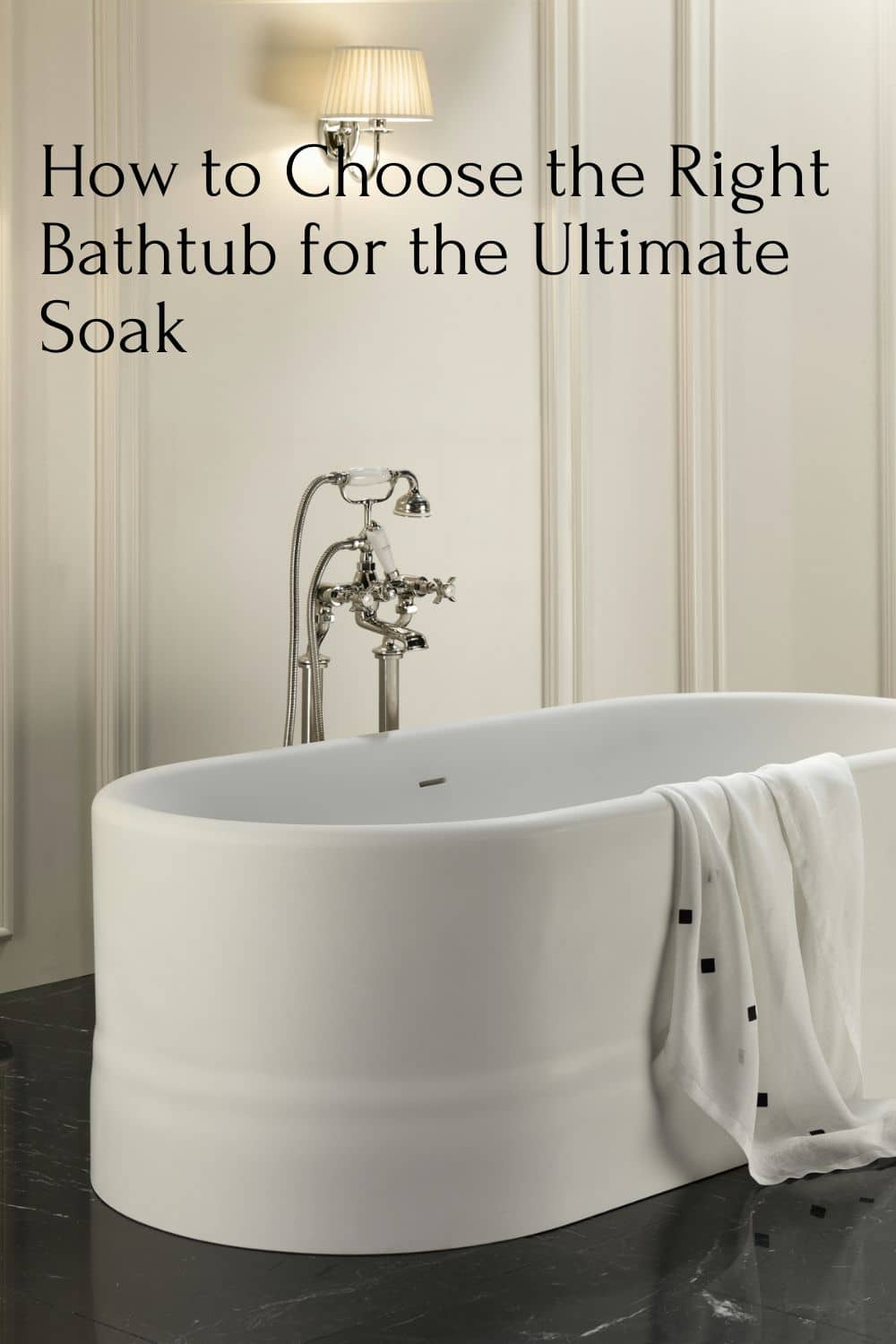Nothing beats discovering something delicious or delightful, such as drinking red wine and soaking in a warm bath, which is perfect for you. Aside from helping combat stress, a warm bath is also an effective way to relieve some types of pain by relaxing tense muscles, joints, and tendons, to improve sleep quality and achieve better cardiovascular health. So, whether you are remodelling an existing bathroom or building a new one, adding a bathtub is something you should consider.
If you decide that this fixture is a must-have in your home, choosing the right type for your bathroom is important. Not only do bathtub Australia retailers offer many styles to choose from, but there are also other practical considerations to make, such as plumbing requirements, tub size, and accessibility. Furthermore, different bathtub materials might influence the aesthetic of a room as well as the overall budget of your project.
When it comes to what kind of bathtubs are best, this depends on your needs and preferences. Below you’ll find some quick information on different types of bathtubs so you can decide what’s best for your home.
Freestanding Bathtub
Freestanding bathtubs are the most traditional of the group, dating back to the days when metal and porcelain tubs were the norm. However, freestanding bathtubs have experienced a revival in recent years and are currently among the most popular types.
Most of the models offered by bathtub Australia retailers are made of a sturdy blend of acrylic and fibreglass, and freestanding tubs are no different. Elegant, circular soaking designs are the most commonly found. Due to its simple design, freestanding tubs often don’t include a provision for faucets. This means you’ll need to carefully consider water supply and waste outlet installation as well as maintaining an uncluttered appearance.
Freestanding tubs are best suited for a large enough open bathroom to make them the focal point.
Alcove Bathtub
Alcove bathtubs, as the name implies, are enclosed on three sides. They can be combined with a shower, which can be installed in the centre or on either end. Often seen as a basic and affordable solution, the area around the nook offers plenty of tiling or panelling opportunities to add a touch of luxury. Easy to install and with a usual length of 1.50m, an alcove bathtub can be the right solution when a smaller tub is required.
Drop-in Bathtub
Because this bathtub type doesn’t have a frame, a surround needs to be built around them. This makes them quite versatile in terms of size, location, and style.
Although the surround needs to be robust to support the tub, it’s what gives this type of bathtub most flexibility. You can build it erected across a tiny bathroom, into an irregularly proportioned nook, or as a complete stand-alone building. These tubs can also be lowered into the floor because they have their rim.
A drop-in tub surround’s width can be completely modified to contain faucets or simply serve as a convenient spot to store bath goods, scented candles, or a wine glass. Although some solutions are reasonably priced, installing a drop-in tub can potentially be costly.
Corner Bathtub
Mainly designed to fit in the corner of a bathroom, installing a corner bathtub generally requires two supporting walls. But there are also drop-in versions that can be built into raised decks.
Corner bathtubs measure between 140 cm to 165cm and allow excellent use of space. However, because they are significantly wider than most tubs, they are often not a good choice for compact spaces. Combining them with a shower can also be challenging, so you may need to install a shower stall separately.
Clawfoot Bathtub
The clawfoot tub is usually thought to have originated in 18th-century Holland, with its decorative feet inspired by Chinese dragon themes. However, these tubs have long been a staple in traditional bathroom decor, where they make for eye-catching focal points.
Clawfoot tubs are often composed of cast iron coated in enamel, but acrylic clawfoot tubs are also available. If you were wondering what the most durable type of bathtub is, cast iron clawfoot tubs probably are – they can last generations due to their durability. However, these durable tubs are also very heavy, which can complicate installation. It’s also important to check if the tub feature faucet holes, as cast iron models cannot be drilled.
Available in white, black, bronze, brass, chrome, and nickel finishes, a clawfoot tub makes a great option for a large bathroom needing a centrepiece.
Jetted Bathtub
A jetted tub is the way to go for ultimate bathtime relaxation. The jetting massage provided by these tubs can help soothe away daily stress and aching muscles and even aid joint and muscle aid treatment.
Whirlpool jets, compressed air bubbles, or a combination of the two are used in these baths. The amount and location of jets vary greatly and can significantly impact the cost. Jetted tubs are also available in a range of shapes and sizes. Jets are typically installed in corner baths and walk-ins. One- and two-person rectangular variants (freestanding and drop-in) are also available.
When planning an installation, the need for a tub pump must be considered. In addition, knowing how to clean a jetted tub is particularly important since the jets can become clogged with time, especially in places with hard water.
Japanese Soaking Bathtub
Also called ofuro, this is a soaking tub designed for relaxation and contemplation. In addition to the traditional cylindrical form, other variants are now available, including round, square, and octagonal shapes. Originally built of wood, modern Japanese soaking bathtubs are available in acrylic, fibreglass, steel, or copper.
Measuring no more than 120cm in diameter, a Japanese bathtub can be fitted in practically any bathroom size and will look great in a bathroom with a serene atmosphere. A central drain is normally supplied; however, faucets must be installed separately. Because Japanese soaking tubs are typically 75 to 90 in height, entering and exiting the bath may not always be a graceful maneuver.
Walk-In Bathtub
For persons with limited mobility, walk-in baths can be an appropriate solution. Their doors open only a few centimetres off the floor for ease of access, the sides are raised for maximum immersion depth, and a moulded seat adds extra comfort. Fittings are frequently incorporated, generally with a handheld shower head on an extendable hose, and some types feature massaging jets.
Due to their depth, walk-in tubs tend to be very roomy but can still be fitted in smaller places when necessary. They can be positioned freestanding or in an alcove, offering you even more options. The downside of this tub is that you must wait until most of the water has drained before exiting. When comparing walk-in tub models, keep the door width in mind, as some are narrower than others.





Leave a Reply